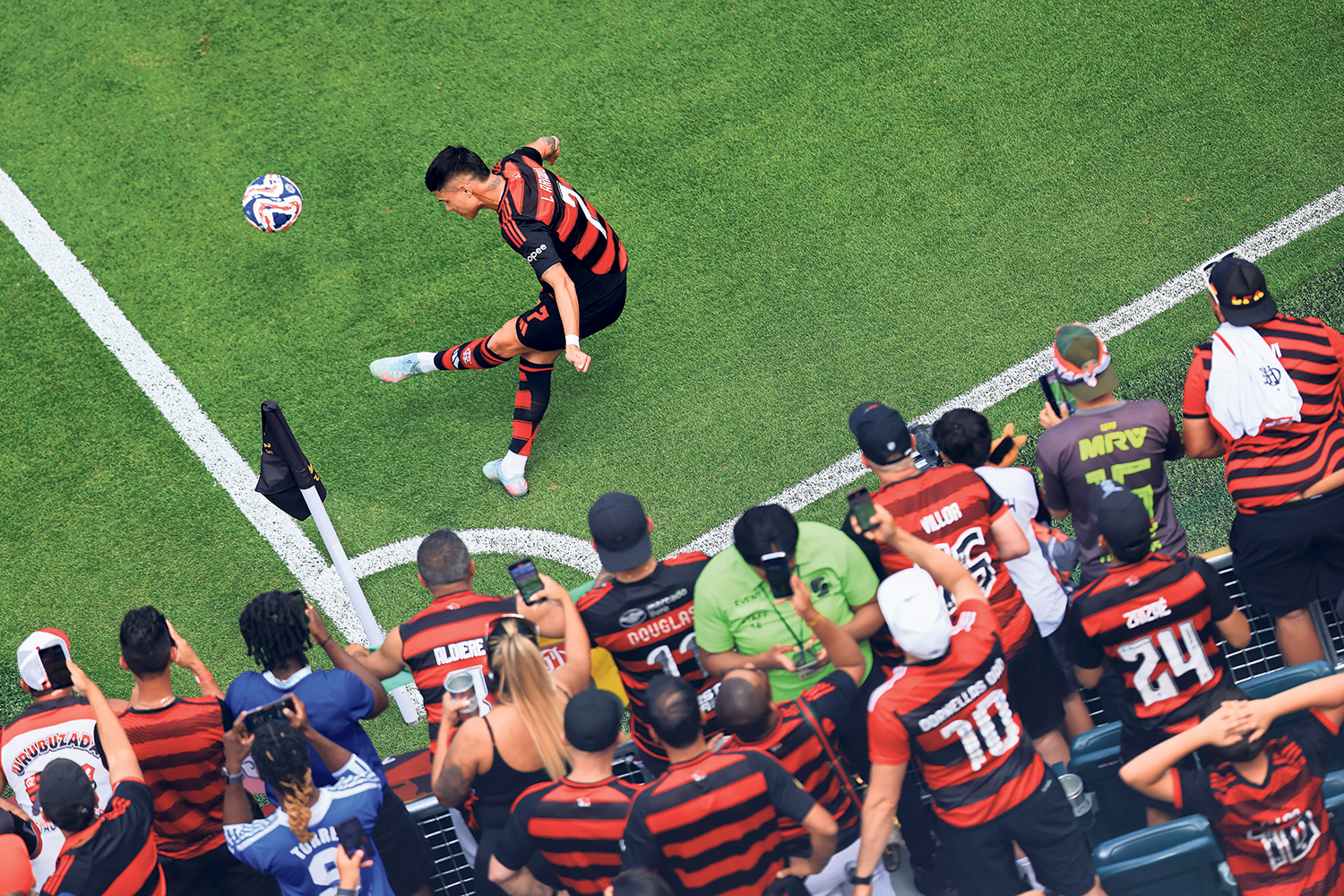Gianni Infantino’s transformation is almost complete.
For two weeks, the Fifa president has not stopped. He has criss-crossed the United States, watching as many games in the Club World Cup as humanly possible, yet somehow also finding time to visit the White House, pretend to have a phone call with Robbie Williams and clutch a ball while posing awkwardly with vice-president JD Vance.
All of it, of course, has been captured for and published on his Instagram account. Since the start of the tournament – his tournament – Infantino has posted more than 100 times. He has not just uploaded images of his adventures, but videos of games and players and fans, too, acting effectively as a content aggregator.
Infantino has often been criticised for seeing himself as a global statesman. Increasingly, it would appear his real ambition is to be an influencer.
His ubiquity has had the desired effect. With a persistence that can only be interpreted as deliberate, Infantino turned himself into the central figure of the Club World Cup. Fifa’s marketing strategy, particularly in the US, has not focused on superstars competing in the tournament, or centred on the stories of the teams involved.
The Club World Cup, instead, has effectively been deployed as a way to sell Infantino himself to the American public: Giannipalooza 2025. It is his name etched on to the trophy. It was Infantino, a 55-year-old Swiss lawyer, who appeared with the YouTuber and online personality iShowSpeed – a Cristiano Ronaldo superfan whose catchphrase is to bark like a dog – before the tournament began.
Quite what the logic of this might have been is anyone’s guess. The kindest reading might be that Infantino is following the playbook forged by Vince McMahon, the now disgraced former owner of World Wrestling Entertainment, and Dana White, architect of the UFC.
McMahon’s great insight was to turn himself into a character in his own confected drama. Infantino, perhaps, believed it might be a way to project his competition, and his sport, to a country where a “commissioner” figure is an instantly recognisable archetype.
Whatever the motivation, it has not worked. Well: it has not worked quite as Fifa might have liked.
Though Infantino’s Instagram feed has been quick to celebrate each and every attendance milestone – 550,000 fans in the first week; 1.5 million by the end of the second – it has been glaringly apparent crowds at the games have fallen some way short of what was hoped, and quite possibly what was anticipated.
The reason is that Fifa fundamentally misread the American market. Infantino’s meeting with iShowSpeed is a case in point. Regardless of the quality of iShowSpeed’s output, he is incredibly popular. His loyal fanbase runs into the millions; he is, in specific demographics, one of the most famous people on the planet.
But those demographics are not likely to have the disposable income or the parental permission, to buy tickets and attend games. Even if they did, they are certainly not likely to be persuaded to do so by the sight of a middle-aged, quarter-zipped European technocrat.
Reporting from The Athletic suggested Fifa dedicated a marketing budget of $50 million (£36 million) or so to promote the tournament in the US, with much time and effort directed towards influencers with followings like iShowSpeed. In doing so, Fifa may well have neglected to engage the Club World Cup’s natural market: those American fans who require no introduction to football.
There was a temptation, when those images of empty seats in Atlanta and Orlando and elsewhere emerged, to use the Club World Cup as a referendum on the state of football in the US, to suggest the sport was not quite as established as we’d been led to believe, to bemoan Americans’ apparently ongoing reluctance to embrace its charms.
Far more likely, though, is Fifa singularly has failed to convince a football public far more savvy, far more sophisticated than is assumed in Europe.
Football is no longer a novelty to the US, more importantly it is no longer a treat. The days when its football-watching minority might be grateful for a Premier League team to appear are long gone.
They are not dazzled by the sheer star power of Chelsea. They know Chelsea, in this iteration, are not exactly a must-watch team, and definitely not in the middle of a working Monday afternoon. It could have been offset by scheduling games for the local audience, rather than the ungainly compromise of trying to win over the US by appealing to Europe; equally, they might have been more successful had they let the teams and players take centre stage in promoting the Club World Cup.
Instead, executives at a number of European clubs felt Fifa had not given them enough opportunity to tell their stories to their host cities; there have also been complaints over how much content clubs were allowed to create for their own channels. Some Fifa commercial partners grumbled, privately, at how the tournament has been organised, too. Infantino, it seemed, did not want anything else drawing focus.
Given those shortcomings, Fifa must be relieved the tournament itself has – more or less – delivered. The great risk of Infantino’s idea was always it would, in its first iteration, prove its own obsolescence: if the latter stages were nothing more than a rerun of the knockout rounds of the Champions League, it would have suggested there was no need for a new contest to establish the identity of the best club team in the world.
As it is, the identity of the final 16 is pleasantly varied. All four Brazilian teams made it through. So, too, have Monterrey, one of two Mexican sides present, as well as Inter Miami, the side parachuted in by Infantino in a fairly transparent attempt to hitch his wagon to Lionel Messi’s bottomless well of star power, and Saudi Arabia’s Al Hilal.
The theory behind the tournament has survived its first brush with reality. It may need tweaking, but there is something here that works: the part of the Club World Cup that takes place on the pitch has some value. The part that takes place on Infantino’s Instagram feed does not.
Photograph by Dustin Satloff/FIFA via Getty Images

